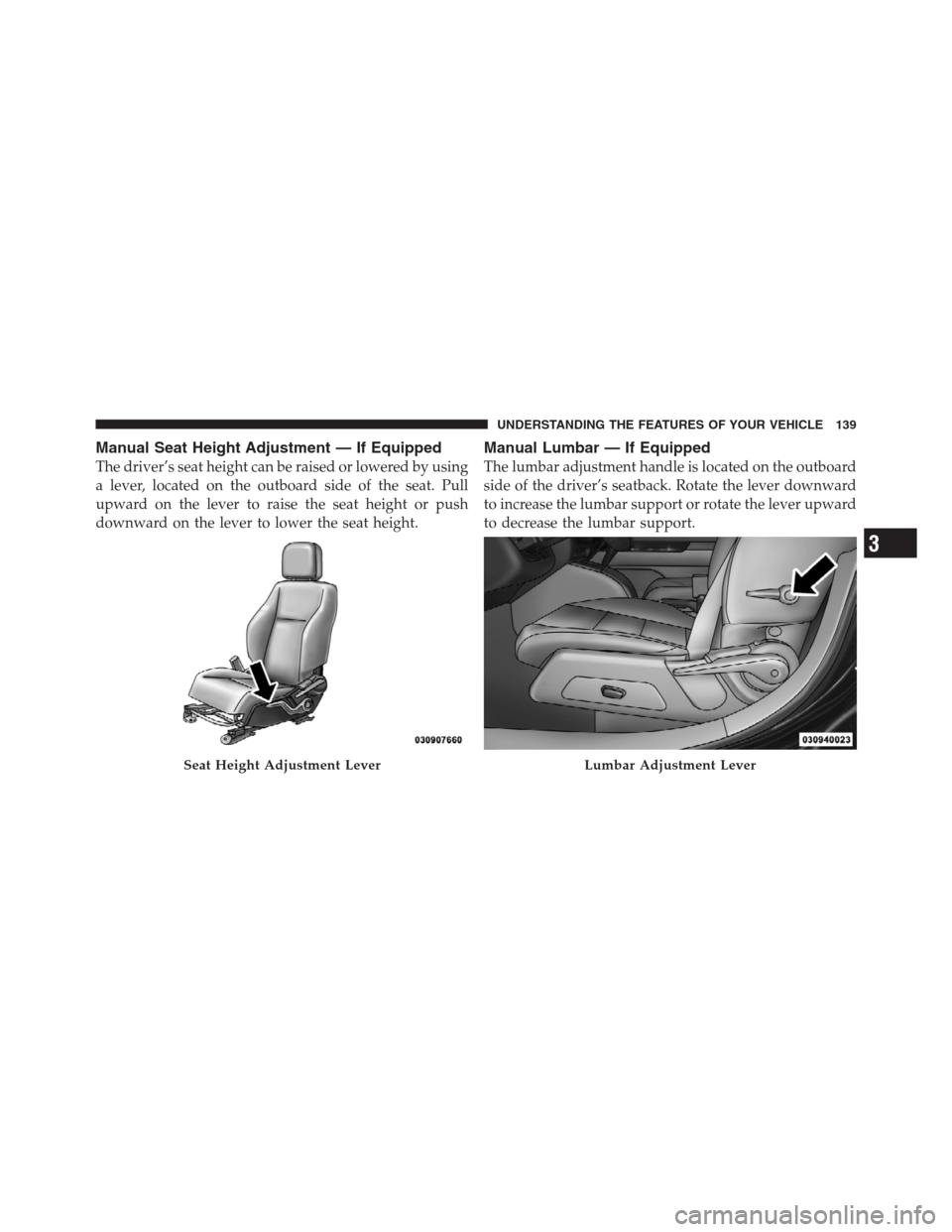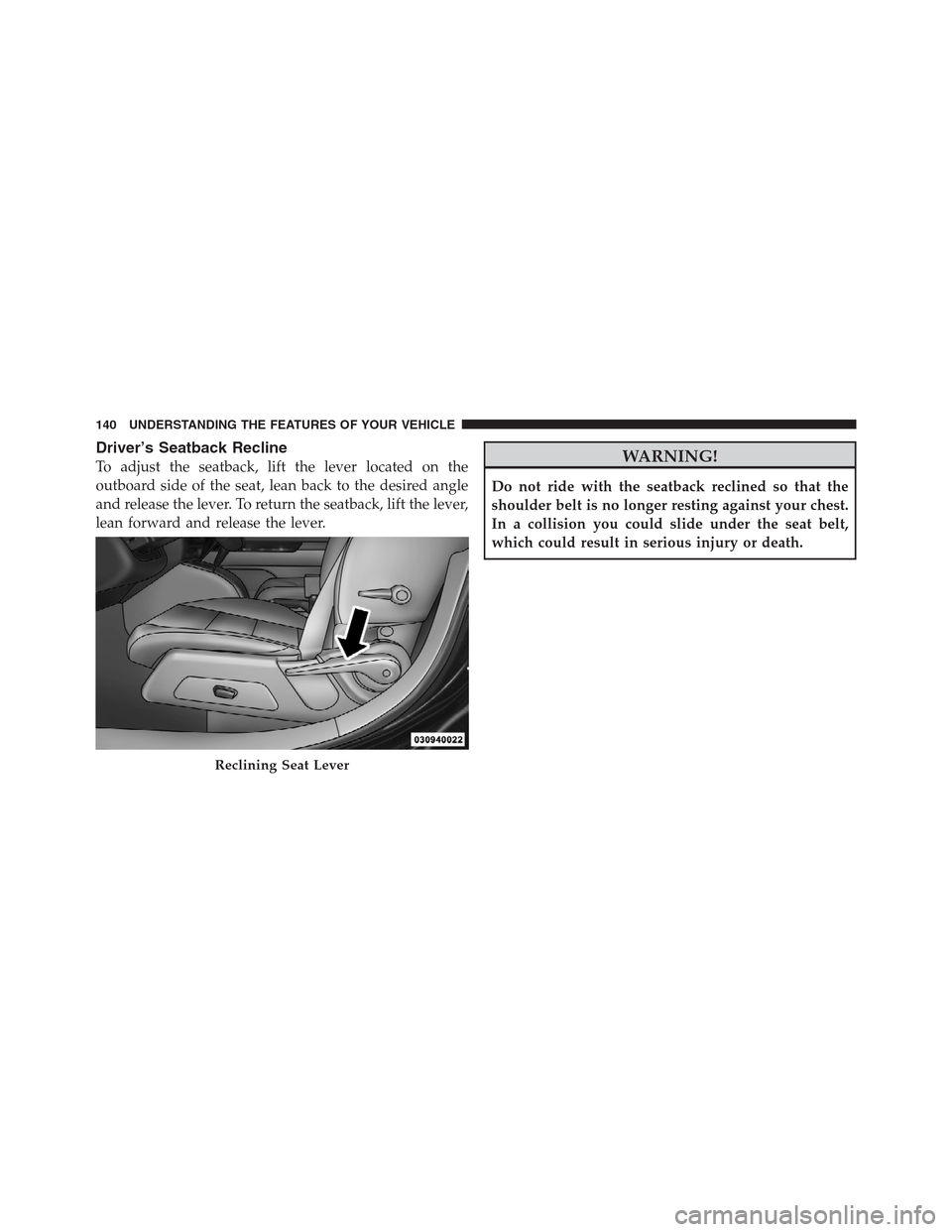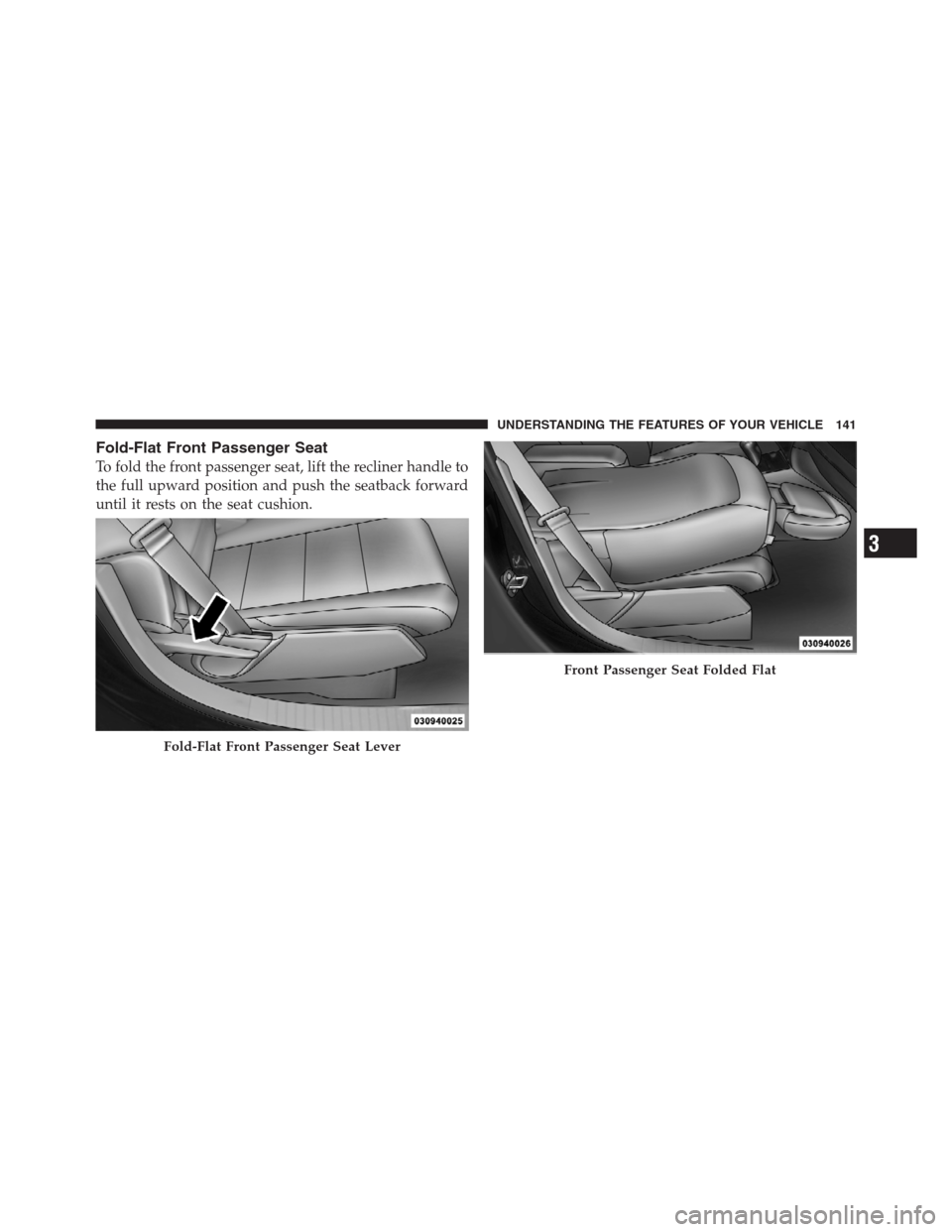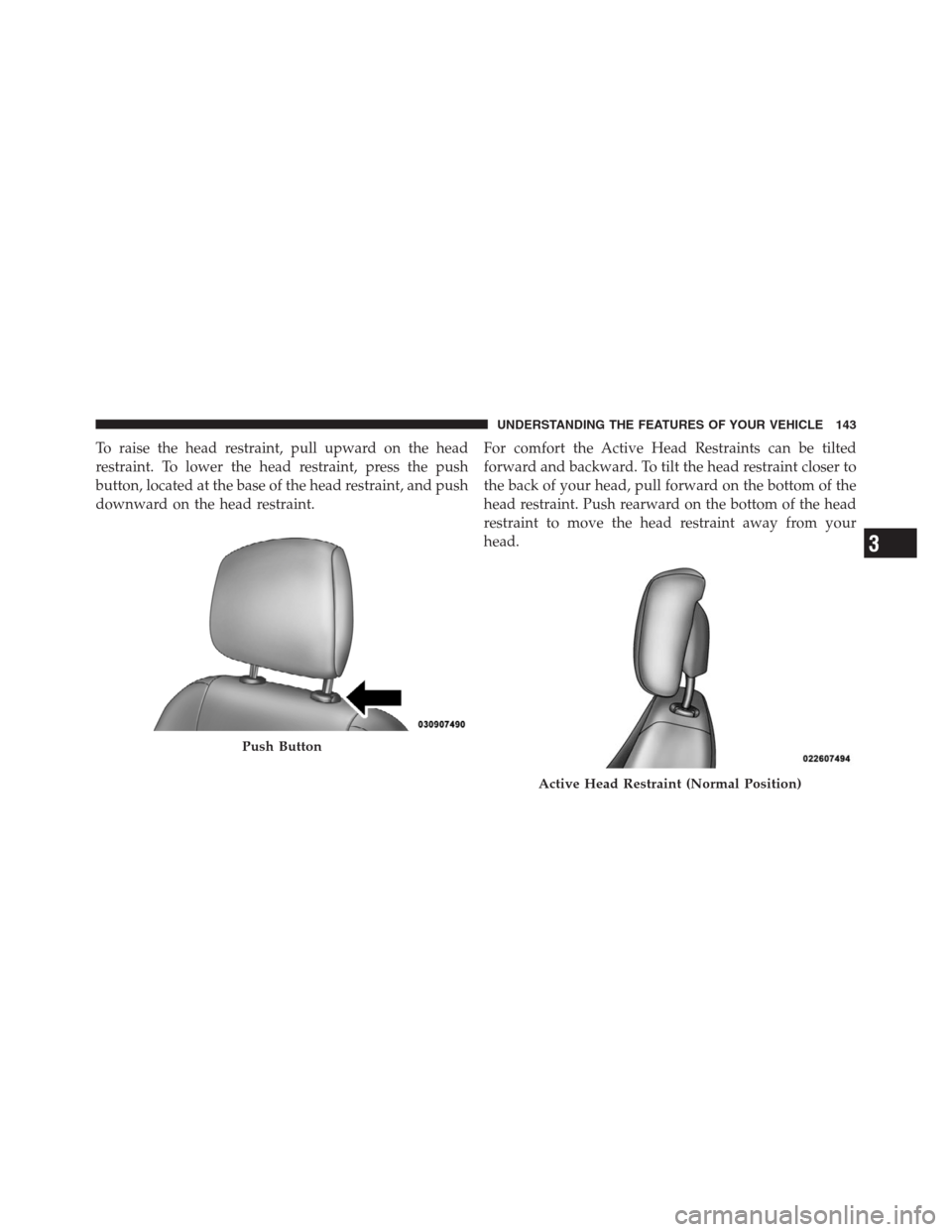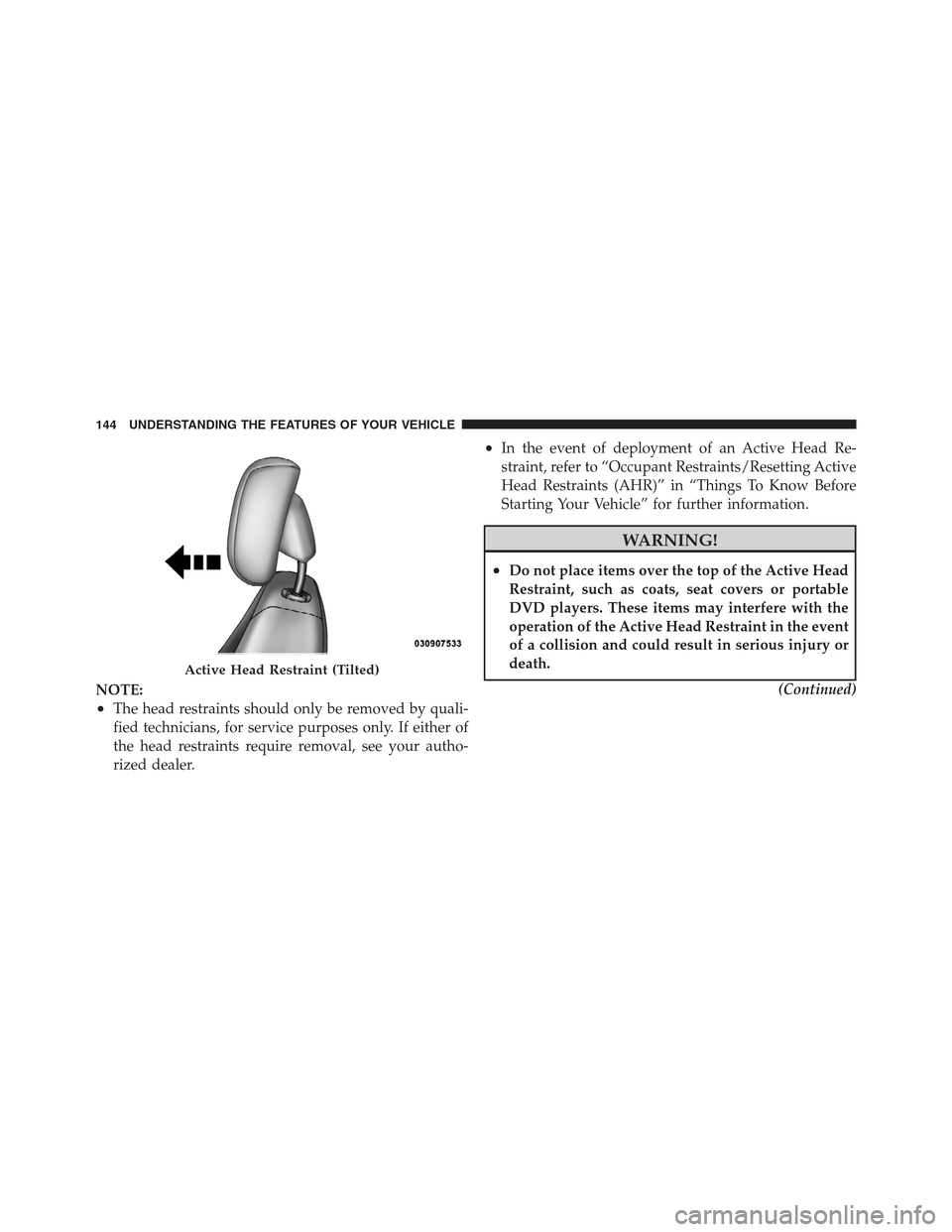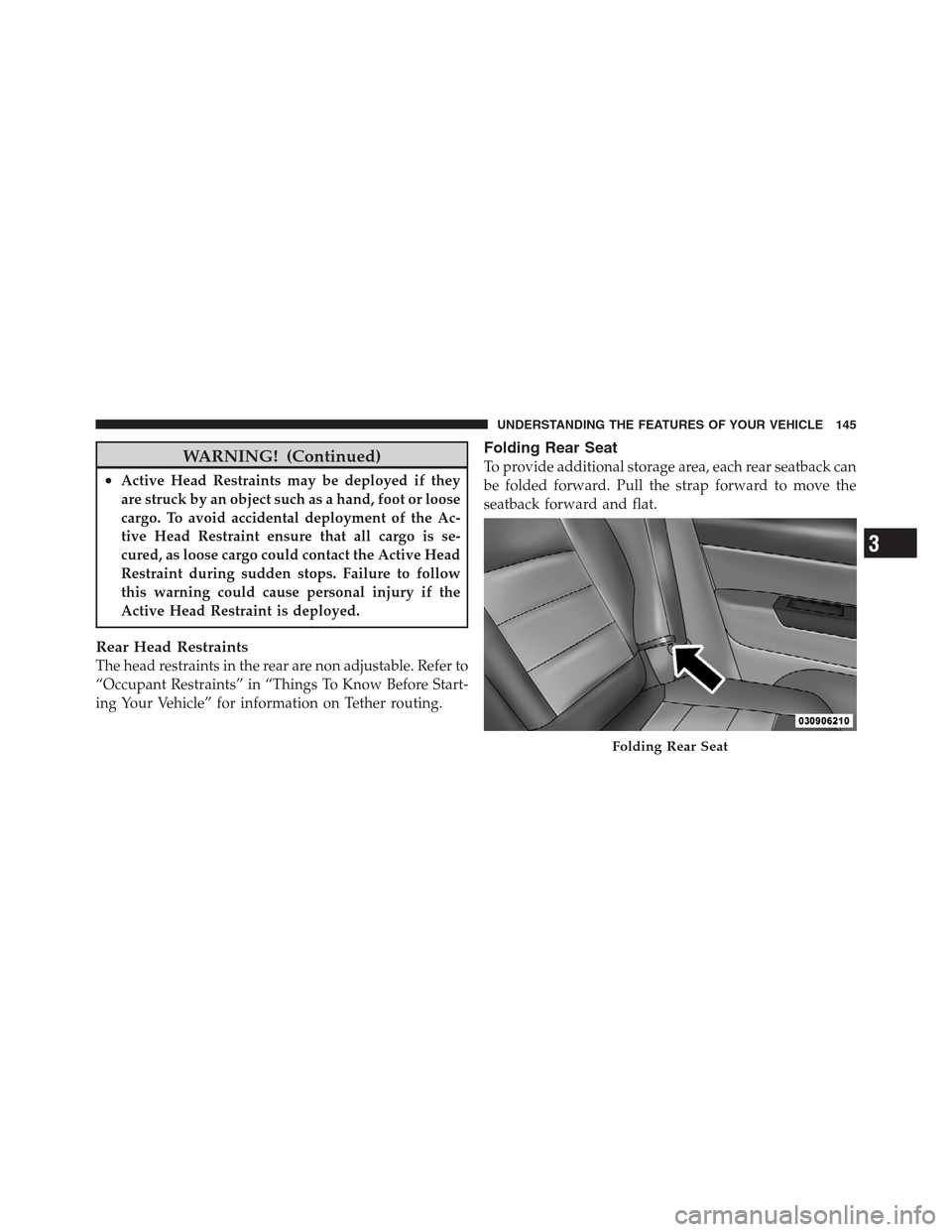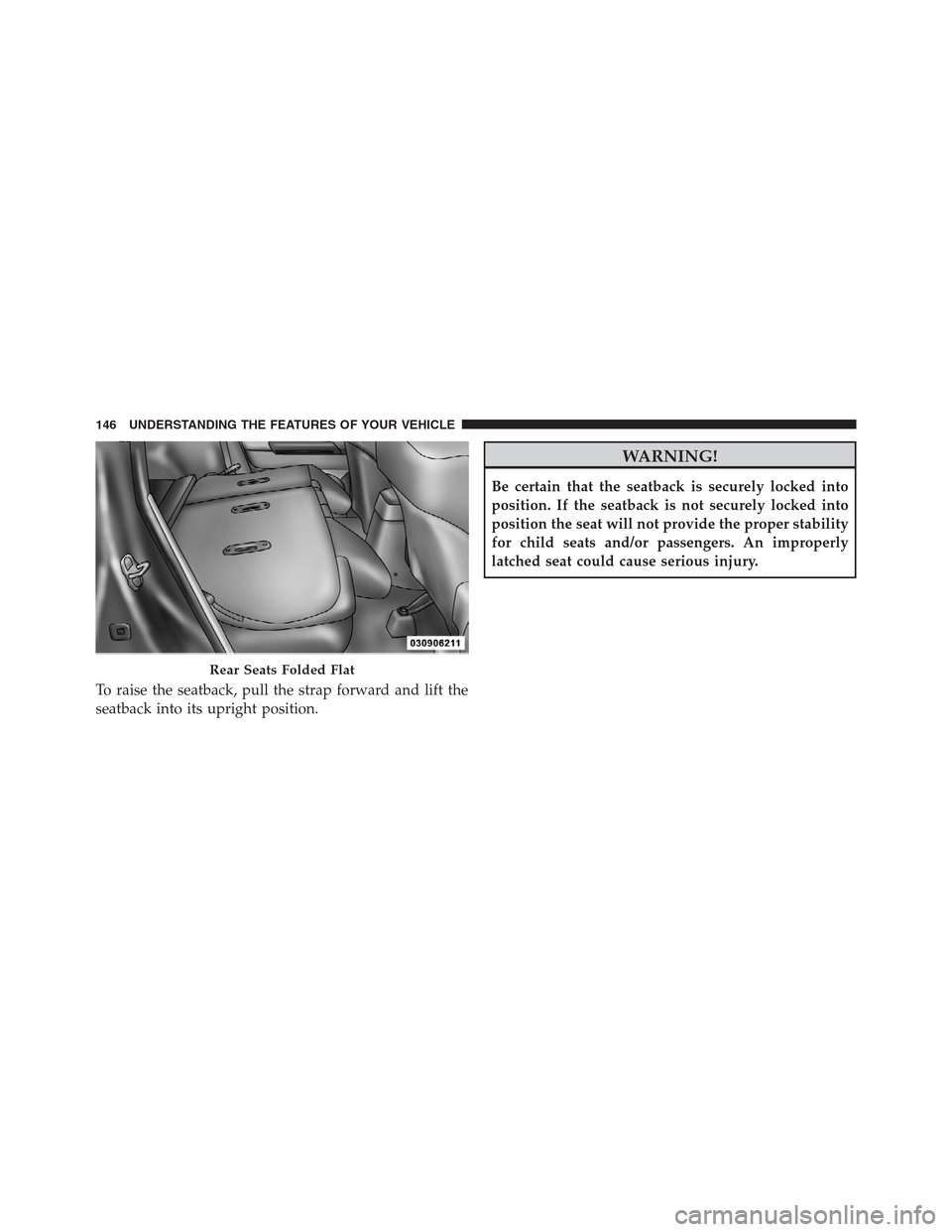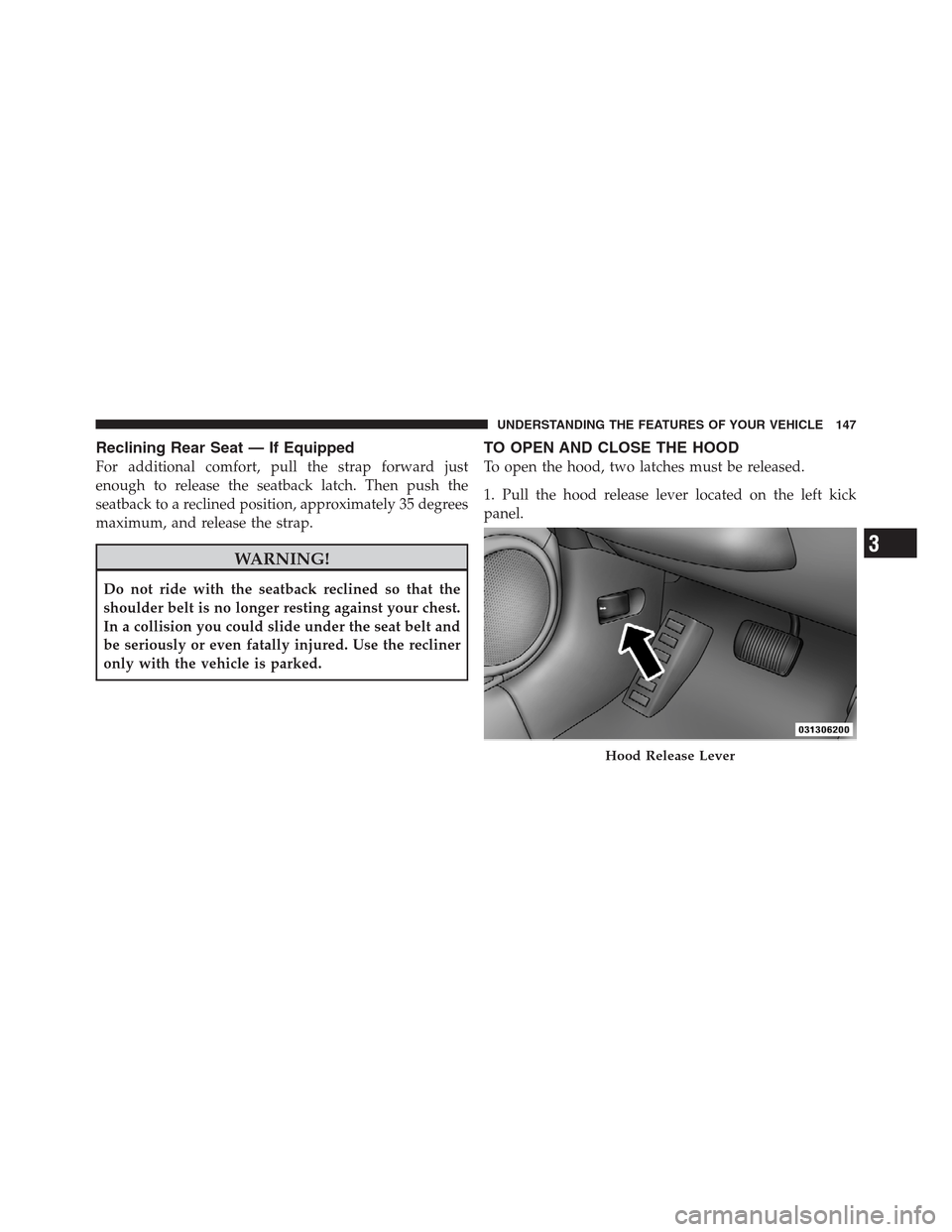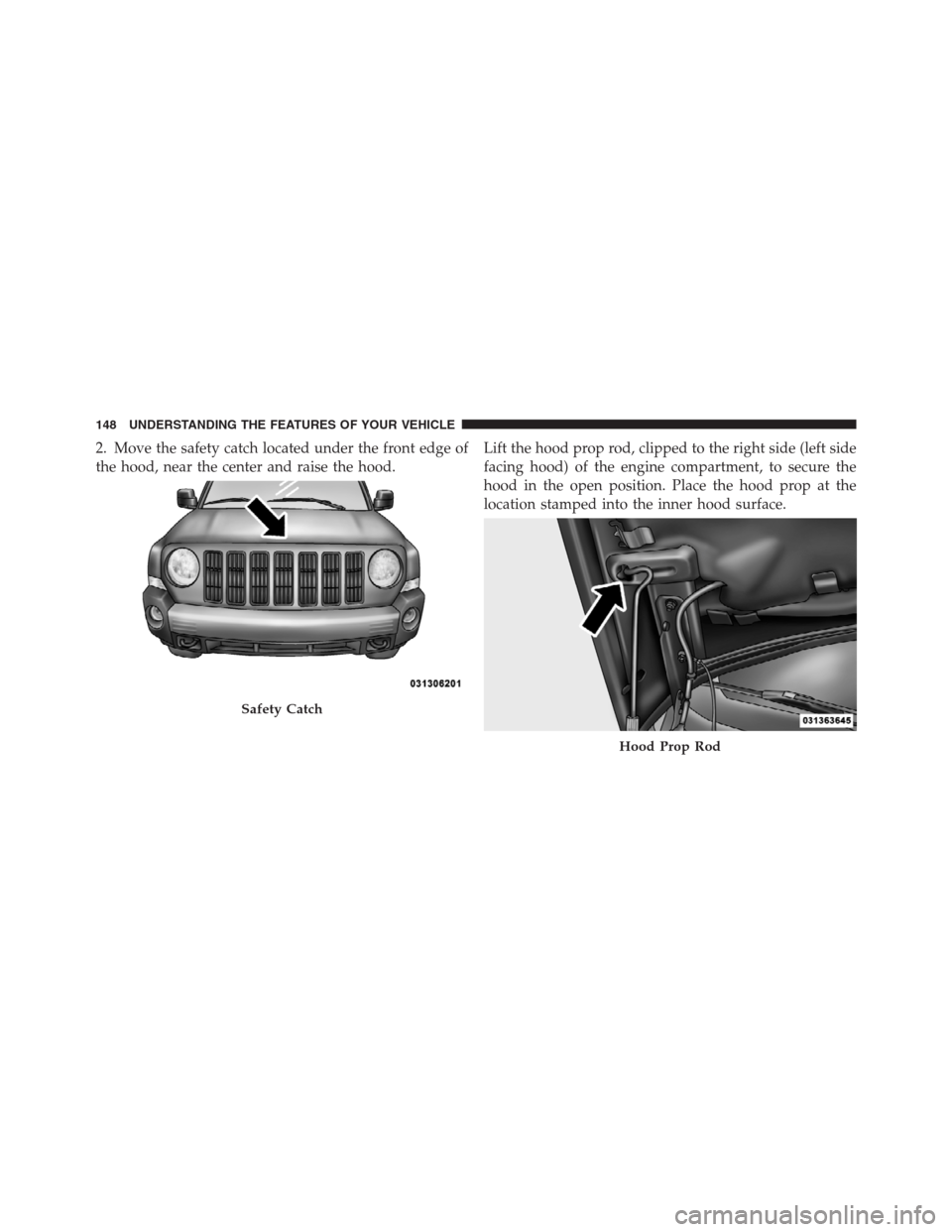JEEP PATRIOT 2012 1.G Owners Manual
PATRIOT 2012 1.G
JEEP
JEEP
https://www.carmanualsonline.info/img/16/7137/w960_7137-0.png
JEEP PATRIOT 2012 1.G Owners Manual
Trending: power steering fluid, check engine light, roof rack, display, bulb, child restraint, mileage
Page 141 of 505
Manual Seat Height Adjustment — If Equipped
The driver’s seat height can be raised or lowered by using
a lever, located on the outboard side of the seat. Pull
upward on the lever to raise the seat height or push
downward on the lever to lower the seat height.
Manual Lumbar — If Equipped
The lumbar adjustment handle is located on the outboard
side of the driver’s seatback. Rotate the lever downward
to increase the lumbar support or rotate the lever upward
to decrease the lumbar support.
Seat Height Adjustment LeverLumbar Adjustment Lever
3
UNDERSTANDING THE FEATURES OF YOUR VEHICLE 139
Page 142 of 505
Driver’s Seatback Recline
To adjust the seatback, lift the lever located on the
outboard side of the seat, lean back to the desired angle
and release the lever. To return the seatback, lift the lever,
lean forward and release the lever.WARNING!
Do not ride with the seatback reclined so that the
shoulder belt is no longer resting against your chest.
In a collision you could slide under the seat belt,
which could result in serious injury or death.
Reclining Seat Lever
140 UNDERSTANDING THE FEATURES OF YOUR VEHICLE
Page 143 of 505
Fold-Flat Front Passenger Seat
To fold the front passenger seat, lift the recliner handle to
the full upward position and push the seatback forward
until it rests on the seat cushion.
Fold-Flat Front Passenger Seat Lever
Front Passenger Seat Folded Flat
3
UNDERSTANDING THE FEATURES OF YOUR VEHICLE 141
Page 144 of 505
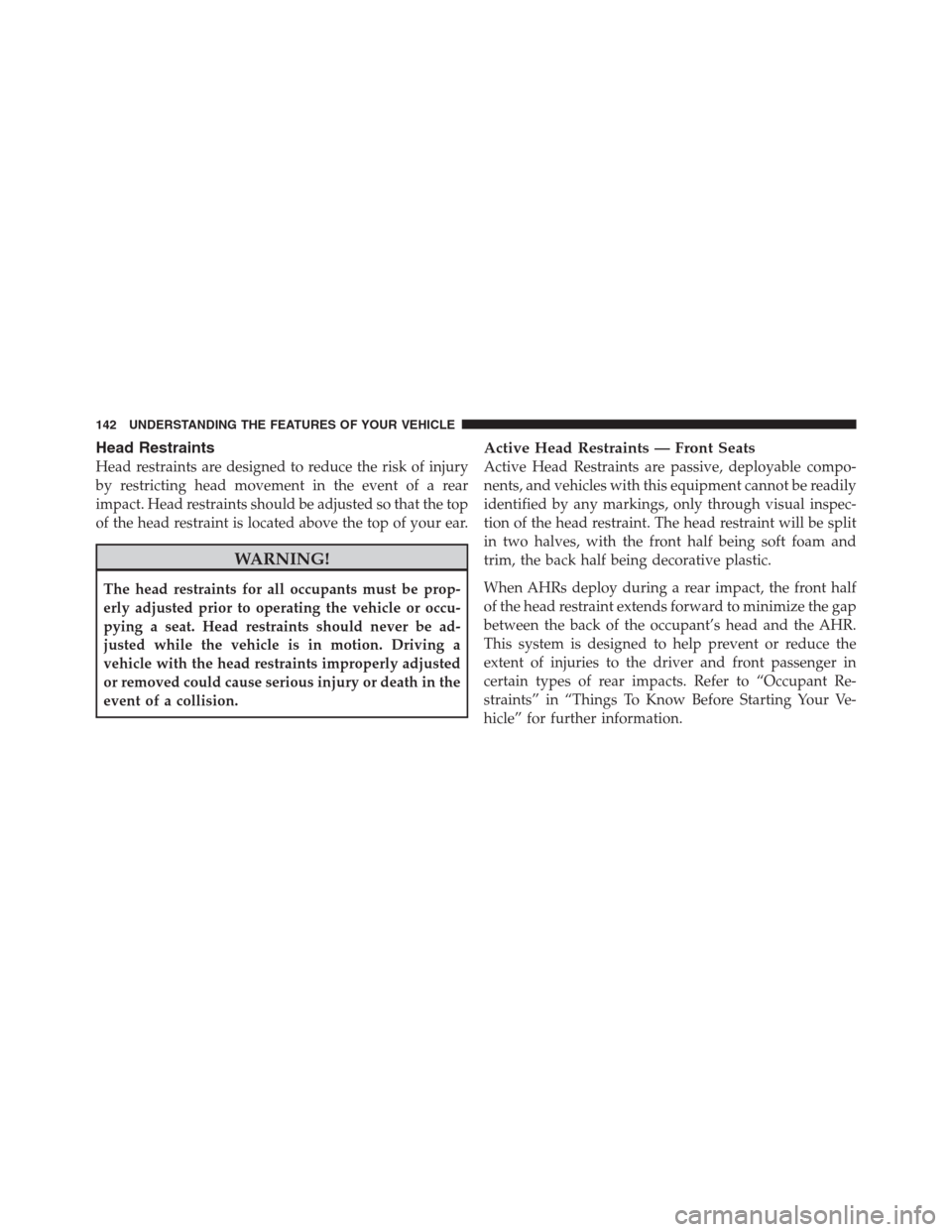
Head Restraints
Head restraints are designed to reduce the risk of injury
by restricting head movement in the event of a rear
impact. Head restraints should be adjusted so that the top
of the head restraint is located above the top of your ear.
WARNING!
The head restraints for all occupants must be prop-
erly adjusted prior to operating the vehicle or occu-
pying a seat. Head restraints should never be ad-
justed while the vehicle is in motion. Driving a
vehicle with the head restraints improperly adjusted
or removed could cause serious injury or death in the
event of a collision.
Active Head Restraints — Front Seats
Active Head Restraints are passive, deployable compo-
nents, and vehicles with this equipment cannot be readily
identified by any markings, only through visual inspec-
tion of the head restraint. The head restraint will be split
in two halves, with the front half being soft foam and
trim, the back half being decorative plastic.
When AHRs deploy during a rear impact, the front half
of the head restraint extends forward to minimize the gap
between the back of the occupant’s head and the AHR.
This system is designed to help prevent or reduce the
extent of injuries to the driver and front passenger in
certain types of rear impacts. Refer to “Occupant Re-
straints” in “Things To Know Before Starting Your Ve-
hicle” for further information.
142 UNDERSTANDING THE FEATURES OF YOUR VEHICLE
Page 145 of 505
To raise the head restraint, pull upward on the head
restraint. To lower the head restraint, press the push
button, located at the base of the head restraint, and push
downward on the head restraint.For comfort the Active Head Restraints can be tilted
forward and backward. To tilt the head restraint closer to
the back of your head, pull forward on the bottom of the
head restraint. Push rearward on the bottom of the head
restraint to move the head restraint away from your
head.
Push Button
Active Head Restraint (Normal Position)
3
UNDERSTANDING THE FEATURES OF YOUR VEHICLE 143
Page 146 of 505
NOTE:
•The head restraints should only be removed by quali-
fied technicians, for service purposes only. If either of
the head restraints require removal, see your autho-
rized dealer.
•In the event of deployment of an Active Head Re-
straint, refer to “Occupant Restraints/Resetting Active
Head Restraints (AHR)” in “Things To Know Before
Starting Your Vehicle” for further information.
WARNING!
•Do not place items over the top of the Active Head
Restraint, such as coats, seat covers or portable
DVD players. These items may interfere with the
operation of the Active Head Restraint in the event
of a collision and could result in serious injury or
death.
(Continued)
Active Head Restraint (Tilted)
144 UNDERSTANDING THE FEATURES OF YOUR VEHICLE
Page 147 of 505
WARNING! (Continued)
•Active Head Restraints may be deployed if they
are struck by an object such as a hand, foot or loose
cargo. To avoid accidental deployment of the Ac-
tive Head Restraint ensure that all cargo is se-
cured, as loose cargo could contact the Active Head
Restraint during sudden stops. Failure to follow
this warning could cause personal injury if the
Active Head Restraint is deployed.
Rear Head Restraints
The head restraints in the rear are non adjustable. Refer to
“Occupant Restraints” in “Things To Know Before Start-
ing Your Vehicle” for information on Tether routing.
Folding Rear Seat
To provide additional storage area, each rear seatback can
be folded forward. Pull the strap forward to move the
seatback forward and flat.
Folding Rear Seat
3
UNDERSTANDING THE FEATURES OF YOUR VEHICLE 145
Page 148 of 505
To raise the seatback, pull the strap forward and lift the
seatback into its upright position.
WARNING!
Be certain that the seatback is securely locked into
position. If the seatback is not securely locked into
position the seat will not provide the proper stability
for child seats and/or passengers. An improperly
latched seat could cause serious injury.
Rear Seats Folded Flat
146 UNDERSTANDING THE FEATURES OF YOUR VEHICLE
Page 149 of 505
Reclining Rear Seat — If Equipped
For additional comfort, pull the strap forward just
enough to release the seatback latch. Then push the
seatback to a reclined position, approximately 35 degrees
maximum, and release the strap.
WARNING!
Do not ride with the seatback reclined so that the
shoulder belt is no longer resting against your chest.
In a collision you could slide under the seat belt and
be seriously or even fatally injured. Use the recliner
only with the vehicle is parked.
TO OPEN AND CLOSE THE HOOD
To open the hood, two latches must be released.
1. Pull the hood release lever located on the left kick
panel.
Hood Release Lever
3
UNDERSTANDING THE FEATURES OF YOUR VEHICLE 147
Page 150 of 505
2. Move the safety catch located under the front edge of
the hood, near the center and raise the hood.Lift the hood prop rod, clipped to the right side (left side
facing hood) of the engine compartment, to secure the
hood in the open position. Place the hood prop at the
location stamped into the inner hood surface.
Safety Catch
Hood Prop Rod
148 UNDERSTANDING THE FEATURES OF YOUR VEHICLE
Trending: change key battery, alternator, spare wheel, radiator, fuel cap, remote control, fog light bulb
